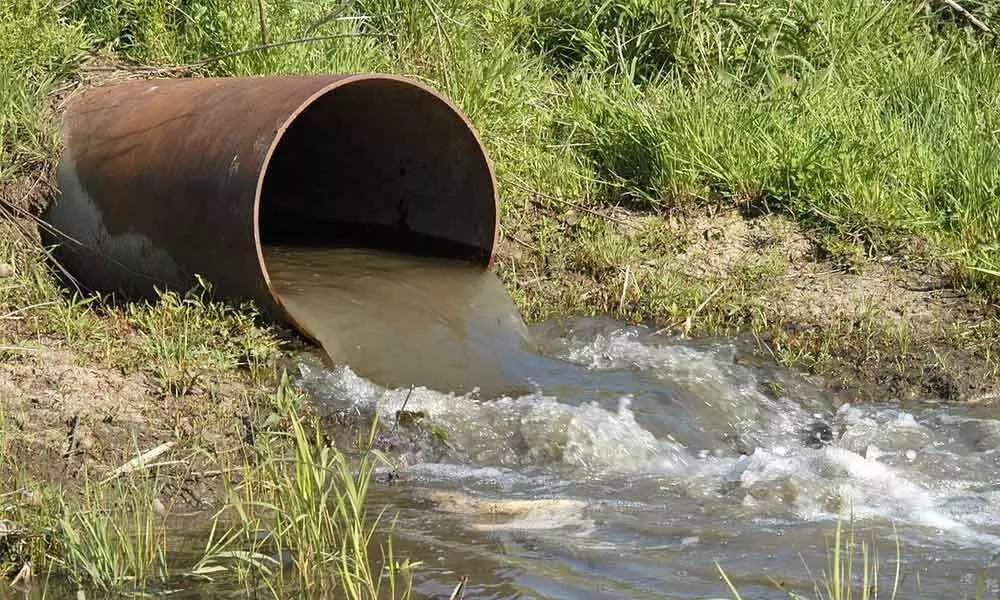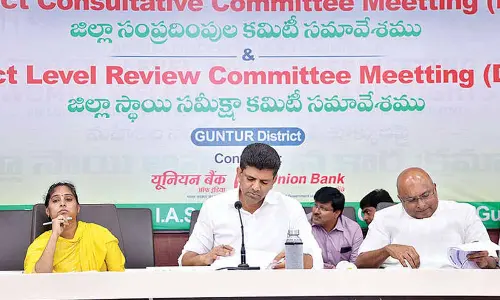Wastewater is resource, not liability

Water management faces a global challenge by a rapidly increasing global urban population, intensifying agricultural practices and expanding industries.
Water management faces a global challenge by a rapidly increasing global urban population, intensifying agricultural practices and expanding industries.
The effects of climate change on water supply further exacerbate pressure imposed on availability and quality of water resources around the world.
Studies indicate almost 80 per cent of water supply to municipalities flowed back into the ecosystem as untreated wastewater — a critical environmental and health hazard.
On an average, high-income countries treat about 70 per cent of the wastewater they generate while that ratio dropped to 38 per cent in upper middle-income countries and to 28 per cent in lower middle-income countries.
This indicates a higher priority for water supply than sanitation and wastewater treatment.
In developing countries like India, for example, the total sewage generation in 2015 was 61,754 million litres per day. About 62 per cent of total sewage, however, was discharged directly into nearby water bodies due to the prevailing incompatibility of the sewage treatment plants.
The 2017 edition of the United Nations World Water Development Report (WWDR) explored the issue of wastewater and its potential as a sustainable resource.
The findings show much work was needed, since a majority of wastewater worldwide was neither collected nor treated. In fact, the treatment of wastewater per se is not synonymous with treating wastewater. In many situations, collected wastewater was actually dumped without any treatment directly into the environment.
The need in water politics was not only to prevent further damage to ecosystems and the aquatic environment, but also to emphasise the importance of wastewater across the world.
Wastewater should be considered a resource whose effective management is essential for future water security.
The goal of wastewater management is to go beyond pollution abatement and be accepted as an additional means of enhancing the economic sustainability of the system because of considerable environmental, social and health benefits.
Transforming the scenario calls for a change in mindset to consider wastewater as a resource for recycle and reuse rather than a liability or nuisance. A paradigm shift from 'use and throw' to a 'use, treat, and reuse' approach has gained momentum, following the principles of circular economy, that is, minimal resource consumption and focus on resource recovery.
A key advantage of adopting circular economy principles in wastewater management is turning sanitation from a costly operation into a self-sustaining one that adds value to economy.
Wastewater is one of the most under-exploited resources we have.
It is a valuable resource from which energy, water, organics, phosphates, nitrogen, cellulose, rare earths and other resources can be extracted. Increasingly, technologies are making resource recovery from wastewater commercially feasible, including in bio-gas, fertilisers, paper, metals and plastics.
Wastewater, most importantly, is a source of 'new' water, thus having the potential to mature as a profitable intervention.
There is currently an annual production of 380 billion cubic metres wastewater — with 16.6 Tg (million metric ton) of nitrogen, 3.0 Tg of phosphorus and 6.3 Tg of potassium embedded, according to a study by the United Nations Institute for Water Environment and Health released in 2020.
If recovered fully from wastewater, there would be a reduction in global demand for such nutrients in agriculture by 13.4 per cent. At the energy front, the energy embedded in wastewater would be enough to provide electricity to 158 million households.
This study is in line with the World Bank report of 2018 on "Wastewater? From Waste to Resource: Shifting Paradigms for Smarter Wastewater Interventions in Latin America and the Caribbean". Both reports said if wastewater were treated according to desired need, it could satisfy demand from different sectors.
This would provide not only nutrient recovery and economic benefits, but also environmental and financial sustainability by reducing demand for freshwater resources, making it available for other uses or preservation.
Countries have embarked on massive programs to collect and treat wastewater, keeping in view the current water and wastewater management scenario.
It was estimated that global water reuse capacity rose from 33.7 gigalitres (GL) per day in 2010 to 54.5 GL per day in 2015, with China, the United States, west Asia, north Africa, western Europe and south Asia demonstrating the viability of sustainable reuse practices.
In some countries, however, there was a negative perception over potential reuse and recovery of wastewater. Water authorities have not completely understood its advantages and development potential to engage the community to widely implement this approach in many countries as well.
Maximising the potential of wastewater to create a secure buy-in for a paradigm shift would require establishing of an enabling environment for change. This would include:
Appropriate legislation: Minimum effluent quality standards in countries should be established, with legislation taking into account costs associated with implementation and overall effect on the environment.
Inter-sectoral regulation, policies and incentives: These instruments need to be modified, aligned, developed and implemented in cooperation with other sectors, to avoid any confusion.
Regulatory changes need to provide a coherent risk management framework for water recycling schemes. For example, Australian water reuse regulations prioritise human health protection, which could encourage a more favourable regulatory environment compared to the United States, where water legislation emphasises environmental health.
Assessing holistic impact and integrated approach: The bigger picture, with respect to benefits, should ideally cover environmental and socio-economic outcomes. It is essential that wastewater reuse and resource recovery were taken into consideration instead of only looking at impact of treated water to the receiving water body.
Adequate funding mechanism: Keeping in view the sustainability of the treatment technology, financing sources should be secured prior to the establishment of the project, especially for operation and maintenance.
Government budgets assigned for river rejuvenation, water resources augmentation and pollution abatement, including corporate social responsibility funds should be seen as a potential source of funding for such initiatives.
Multi-stakeholder engagement: Depending on requirements of the interventions, an array of stakeholders might need to be involved. In providing land and other clearances as well as market regulations, government intervention would play a key role.
The private sector should support public utilities in funding, retro-fitting and building new facilities, and sustainable operation and maintenance. Involvement of NGOs will be important in advocating benefits of reuse and recycle of wastewater. Beneficiaries like industrial and agricultural associations should be kept in the loop.
Awareness and mindset change: One of the biggest hurdles was in securing public acceptance. When people heard about technologies converting 'waste to resource', they get apprehensive. It is not generally the hardest part to find out the right technology or design the system, it is educating the public and engaging them in the process to get their approval.
Improved management of wastewater will be critical to green growth, particularly in the context of the 2030 Sustainable Development Goals (SDGs).
Supporting resource recovery from wastewater would require a step-by-step approach to overcome a number of constraints. This would produce a high rate of return in direct support of SDG 6, 7 and 12, but also be highly relevant to the achievement of other development goals, including climate change adaptation and attempts to move 'net‐zero' energy processes towards a green economy.
(Courtesy: Down To Earth)
















